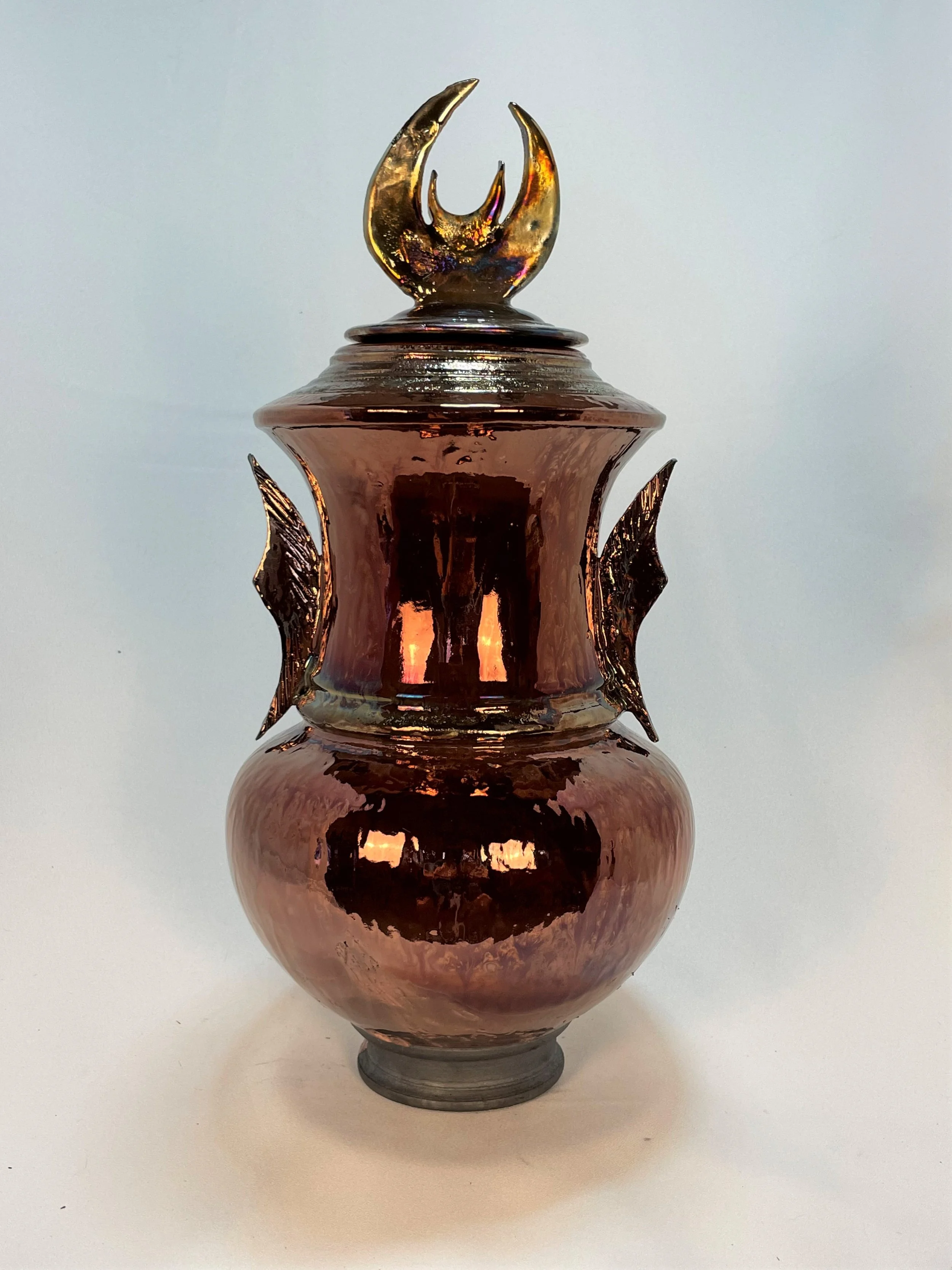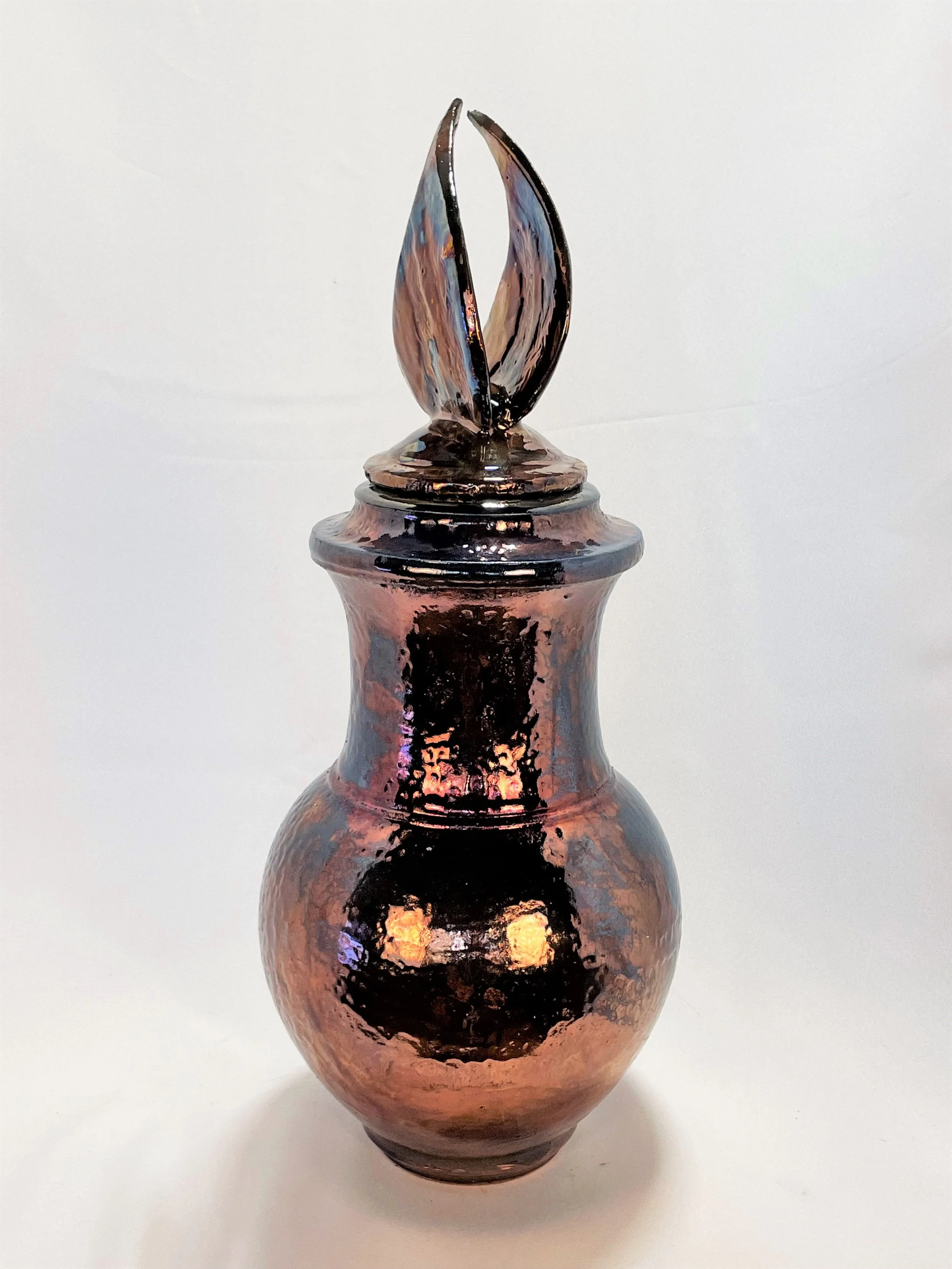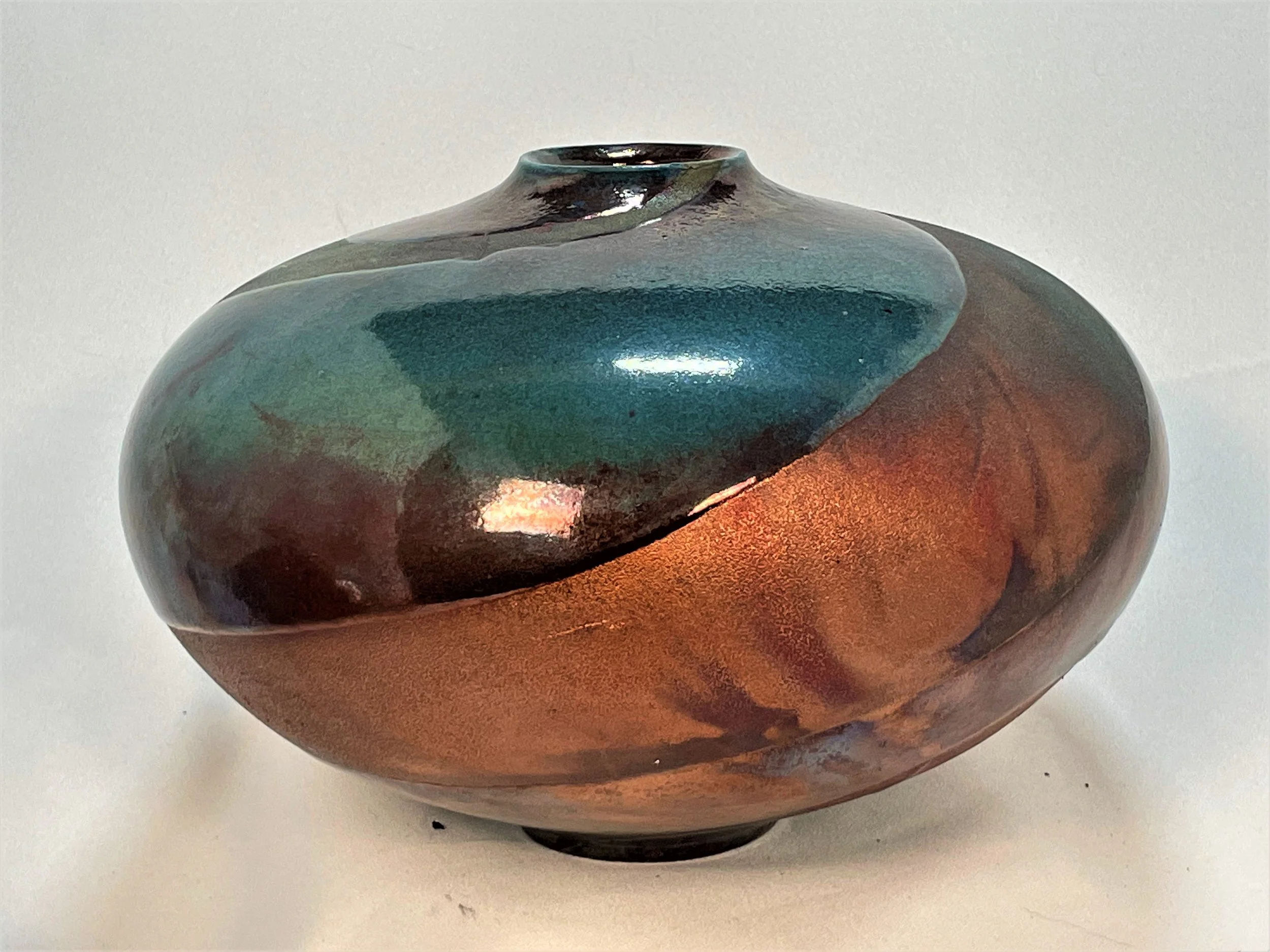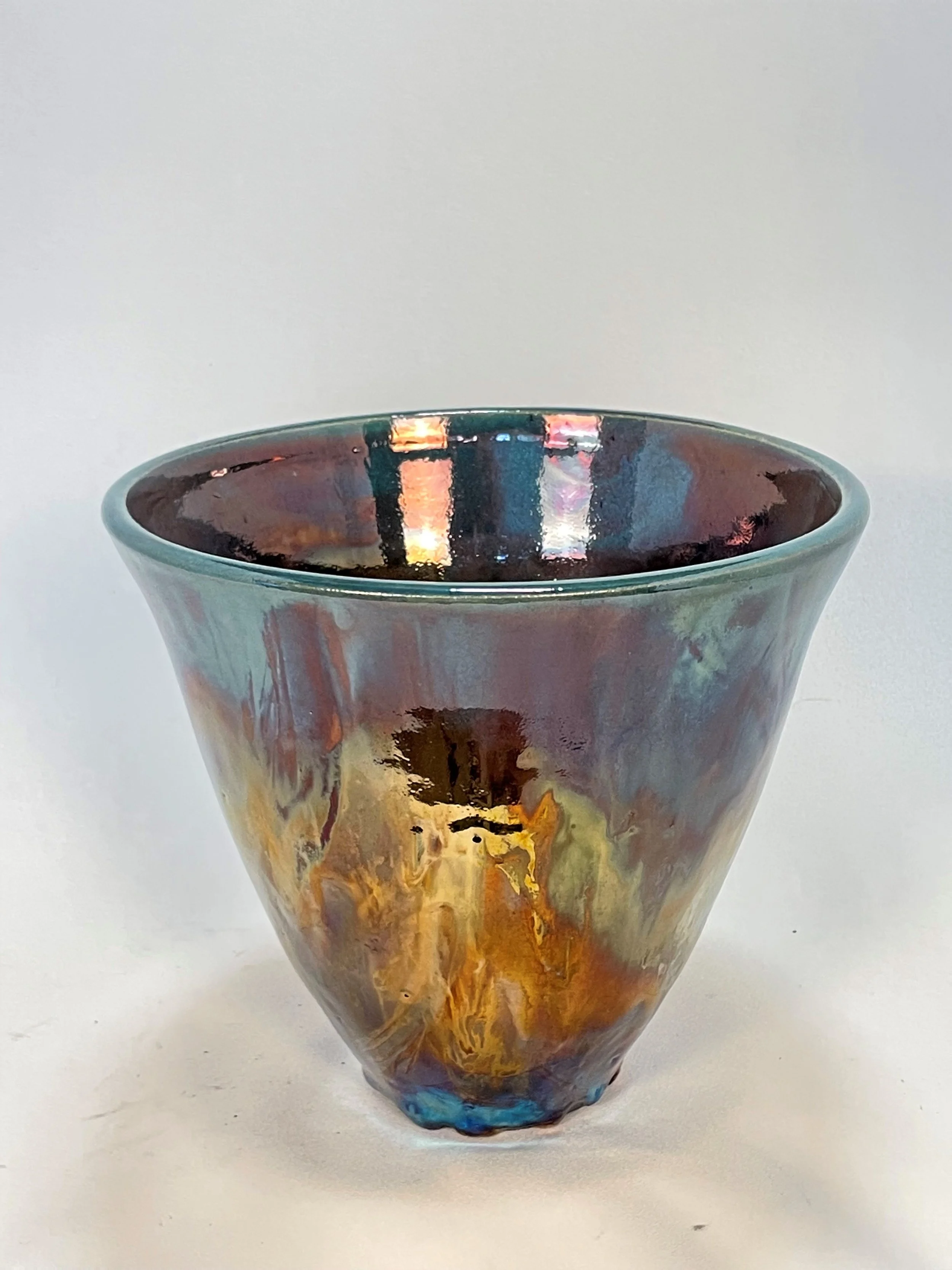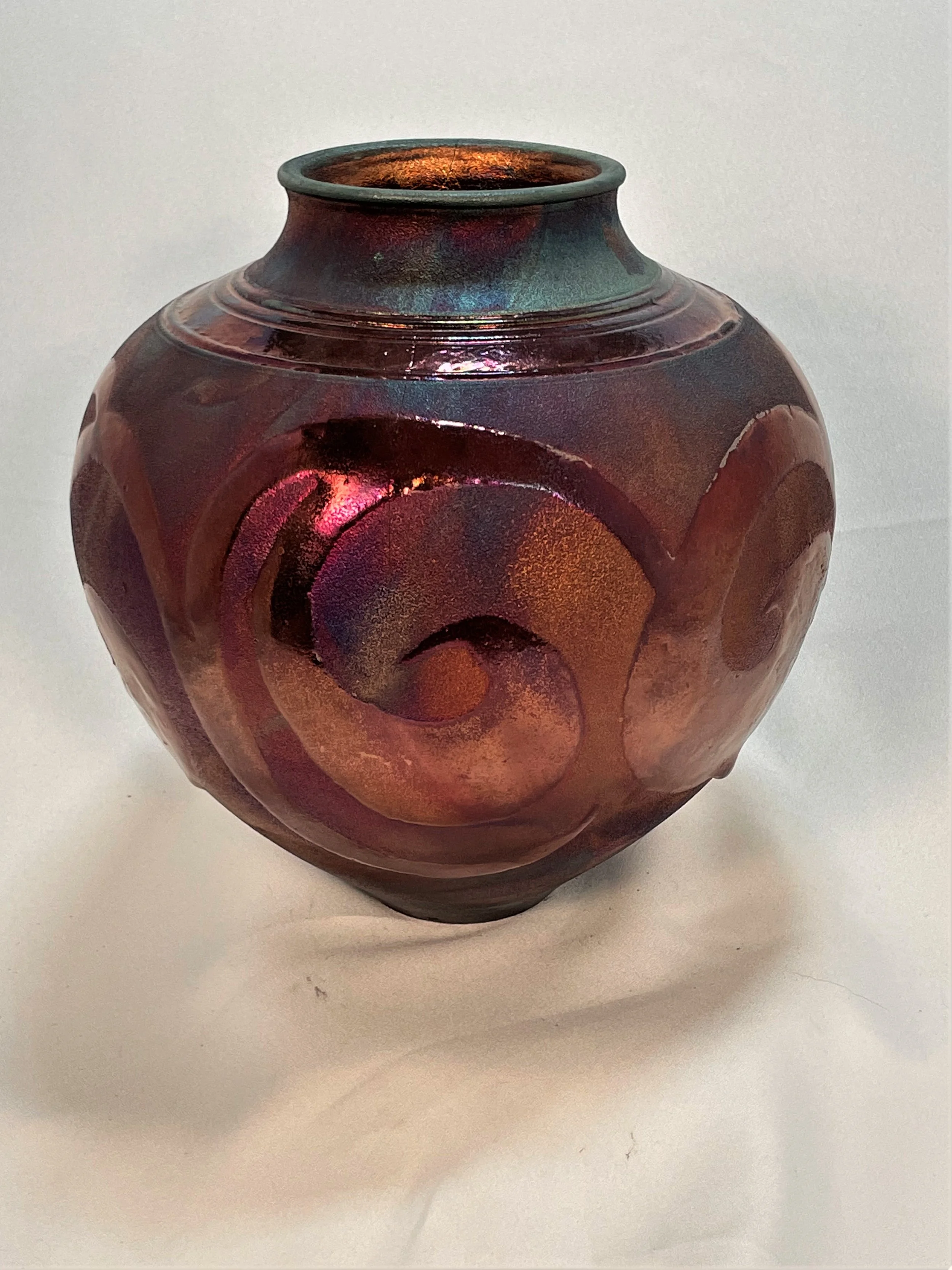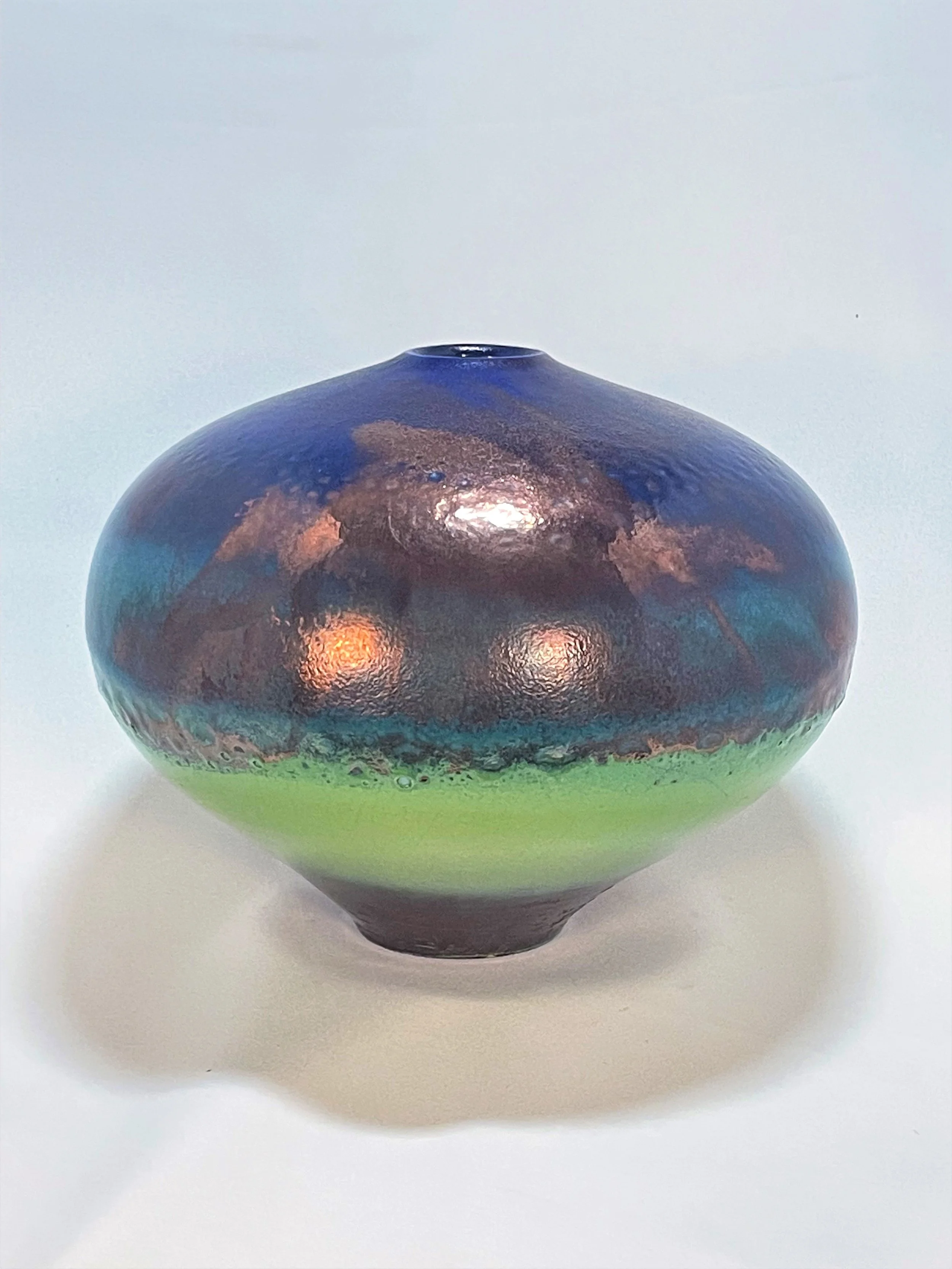Luster Raku
What classifies a Raku finish as Luster? The answer is that it's all a matter of the temperature that the pieces are pulled from the kiln and the amount of reduction from the smoke of the Raku process.
For my Luster Raku firings, I pull the pieces at higher temperatures, approximately 1800℉, and place them into a container with a combustible material (I use newspaper). Then I close the lid, and the fire is extinguished, which produces smoke. The smoke asphyxiates the oxygen in the container, which creates a state of chemical reduction. My Raku glazes typically contain copper and other metallic oxides. I often use Cobalt to produce blues and Manganese, which can produce purple. As a Raku potter, I strive to come up with glazes to yield beautiful and intriguing results.
Raku is a very sensitive process, and slight changes produce varying results. The process can be so sensitive that if I place one sheet of newspaper on top of a piece when reducing it in a container, I can turn the top from blue to copper. I produce a myriad of metallic luster results based on the temperature pulled from the kiln and the amount of reduction. Depending on the chemicals I use in the glaze, the temperature when pulled from the kiln, and the amount of reduction from the smoke, the results will vary from a pure copper luster to a finish that includes many other metallic colorful variations. In Luster Raku, the beautiful effects are a result of the magic from the chemical reduction caused by the heat and smoke bringing out the metallic lusters from oxides in the glaze. This is what I refer to as "Luster."
Examples of Luster pieces appear above. Visit the Shop now to see all Luster pieces and my other styles of Raku.

